The Batman
“Bruce Wayne? Who’s that? Sounds like a cool guy.” — Batman
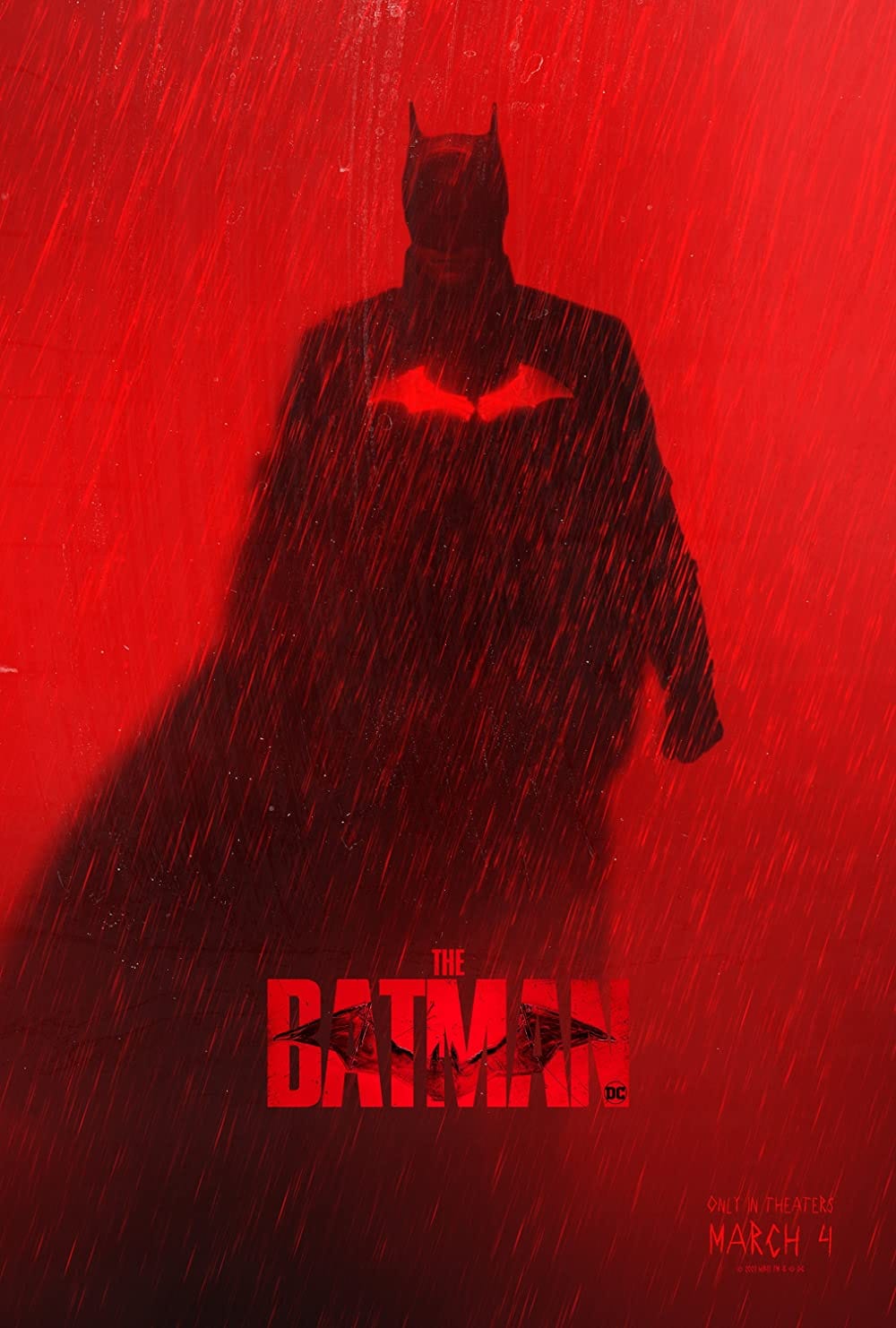
When a sadistic killer leaves behind a trail of cryptic clues, a still new-to-the-gig Batman takes the case. As the evidence begins to point toward the Wayne legacy, and the scale of the villain‘s plans begin to become clear, the young Dark Knight Detective must forge new relationships, both within law enforcement, and outside of it, if he wants to unmask the culprit and bring justice to Gotham, a city that has suffered from corruption and the abuse of power for far too long.
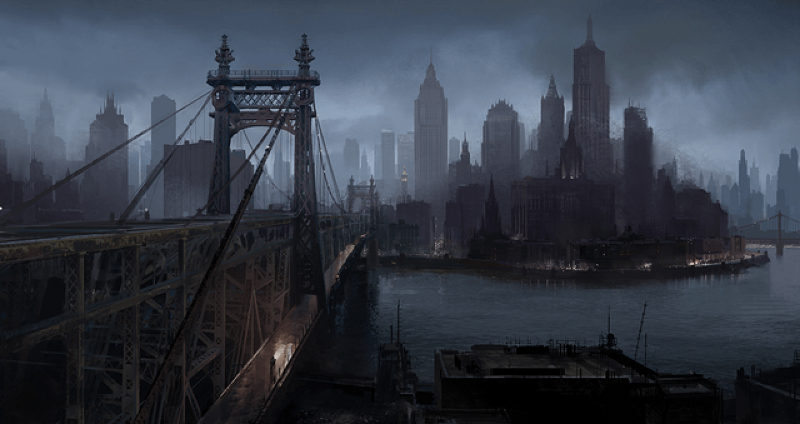
So, with the spin-off HBO show about Colin Farrell's Penguin set to air on Thursday, September 19th—and even though the show looks like it's going to be Colin Farrell in a fat-suit as Tony Soprano in Gotham City—I'm interested, so I figured, what better time to rewatch its source film, right?
The Batman is the first film, in what is probably the newest trilogy, in the latest reboot of the movie franchise of the well-known nocturnal vigilante from DC Comics. A film plagued by COVID issues during filming, it's not exactly a complete rehash of Nolan's vision, but at the same time...
It is, at least spiritually.
Now, there are some out there who will say that this film’s somber tone and its Film-Noir meets gritty ‘70s crime drama style is different from Nolan's films. Especially when you consider it’s oft-stated intent to bring the character more closely in-line to the original style of the comic strip and its pulp fiction roots, all while pulling direct inspiration and visuals not just from the basically now omnipresent influence of Frank Miller and Klaus Janson’s seminal comic The Dark Knight Returns, as well as from Miller and David Mazzucchelli‘s Batman: Year One, and Jeph Loeb and Tim Sale’s well-known mini-series, Batman: The Long Halloween, and that somehow... this makes it completely different from the Nolan films, that it’s own thing.
And y’know what? Sure, I'll let them have that. After all, it’s technically true. However, at the same time, these are really just academic nuances that are only important to angry nerds and long-time fans like me. But really, I do think it’s fair to say that to most of the general audience out there, the simple reality is that this film is just more of the same, nothing but a slightly different bucket that is drawing from the same well Christopher Nolan pulled from.
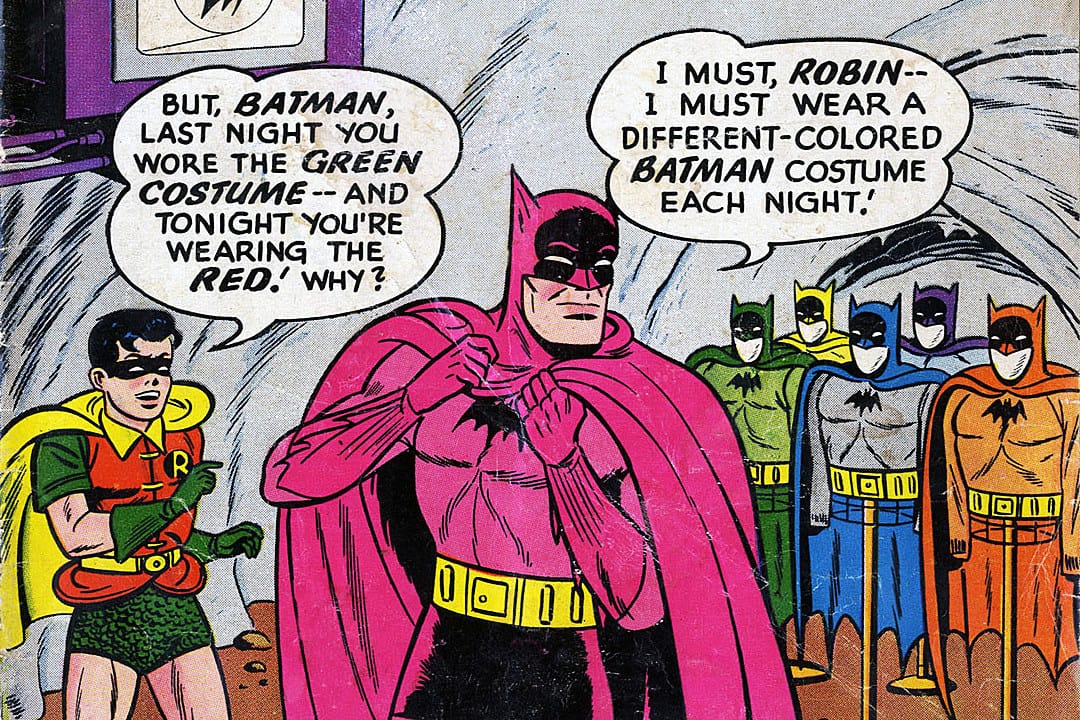
I’ll be the first to admit that I was not impressed with this film the first time around. That’s not because it’s bad. It’s not bad. It’s… decent. Not great, but good. No, I was mostly disappointed because the simple truth is, I’m tired of this version of Batman, the sad Batman, the grim and gritty Batman, the Dark Knight.
Yes, it was fun once, long ago, empowering even. The dark and violent vigilante version of Batman helped to usher in an era that allowed the chance for some more interesting, more bold, more daring, more “mature” stories to be told in superhero comics. Published in 1986, Dark Knight Returns, along with Watchman, changed the face of the industry, definitely for good, but also definitely for ill… because at this point, that dead horse has been beaten beyond all recognition.
Unfortunately for the rest of us, this version of Batman is the preferred version, not just by Warner Brothers—who have long been unwilling to take a chance at the box office on any other variation—it is also the one most beloved by sweaty weirdo nerds and bitter incel freaks. These guys aren’t the majority, but they are a very loud, very obnoxious, and incredibly toxic subset of fandom, who use the character in their creepy masturbatory power fantasies to live vicariously through the dark knight’s violence, luxuriating in the heady miasma of a well-worn daydream, one where anyone who disrespects them gets beaten up, because no one laughs at the Batman. No one that doesn’t come to regret it. Because Batman is cool, awesome, sexy, and also infallible. People fear the Batman, and that fear means they respect Batman. And even though he is always alone, it’s by choice, because he’s choosing to stand ever vigilant, to sacrifice his own personal life to protect yours, his own chance at happiness, because he’s a noble warrior, and it’s undeniable that you have to respect that, or you’ll get beaten up too.
Also, girls are fucking scary, man.
And because these guys spend all their money on everything Bat-labeled, and that's all that really matters to Warner Brothers, for decades now, other than the occasional offshoot, the grim and gritty Batman is the only version of Batman we‘ve been able to get, and it’s so boring.
So boring.
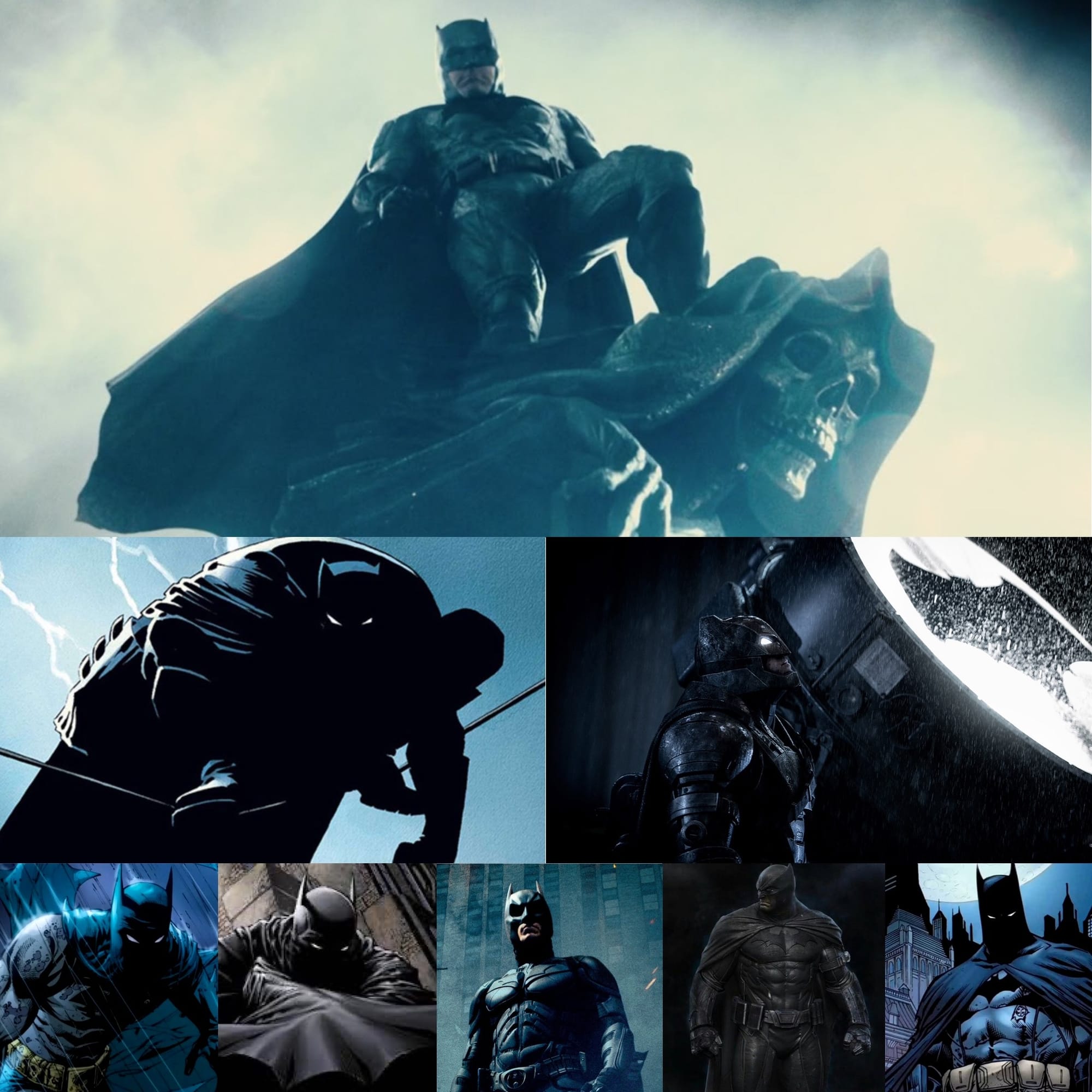
So, as soon as I saw the trailers for this film, I knew I was gonna be bored again.
I’m tired of the rain and the shadows. I'm tired of the sad dirge of the pop songs. I'm tired of the misguided attempts to make the most unrealistic superhero in all of comic book history—you try jumping over an alley from one building rooftop to another—into this warped idea of what a “realistic” superhero would be like, which in this case, just fyi, is intended to mean “one that could possibly exist in the real world“ not as a commentary on fame and celebrity.
For example, just to illustrate how unrealistic a “realistic” Batman is, in this film alone, he survives standing right in front of an explosion, walking away with just a vague limp and a ringing in the ears, and you can just take a trip down to the local VA to see how accurate that is. He also survives slamming into an overpass at 50 miles an hour, after jumping off a thirty or forty story building in a kitesuit—which was an awesome moment, don't get me wrong—but that hit should have straight-up killed him. This version of Batman gets shot point-blank, multiple times, and barely even seems to notice, let alone flinch. Yes, he's wearing armor, but that's not how any kind of body armor works. And to be clear, I'm fine with this kind of crazy bullshit in a comic book movie, it's supposed to be nonsense, after all, but that also means that it's not "realistic." Not in any way.
But these weird nerds don’t want to hear that shit.
Because being “realistic” is a vital piece of the whole boring masturbatory power fantasy these creepy weirdo nerds love, because it leads directly into the idea that if the movie stuff is "realistic" then they could do it too. That means, if the clarion call of silver trumpets rang out, calling them to battle, if the long dark night, full of terrors, were to suddenly light up with the brilliant beacon of the Bat Signal, if the city needed them… Then these little guys with their little lives could just quit their Pizza Delivery jobs, their IT jobs, their insurance sales job, their math teacher jobs, their law enforcement jobs, and… go be Batman.
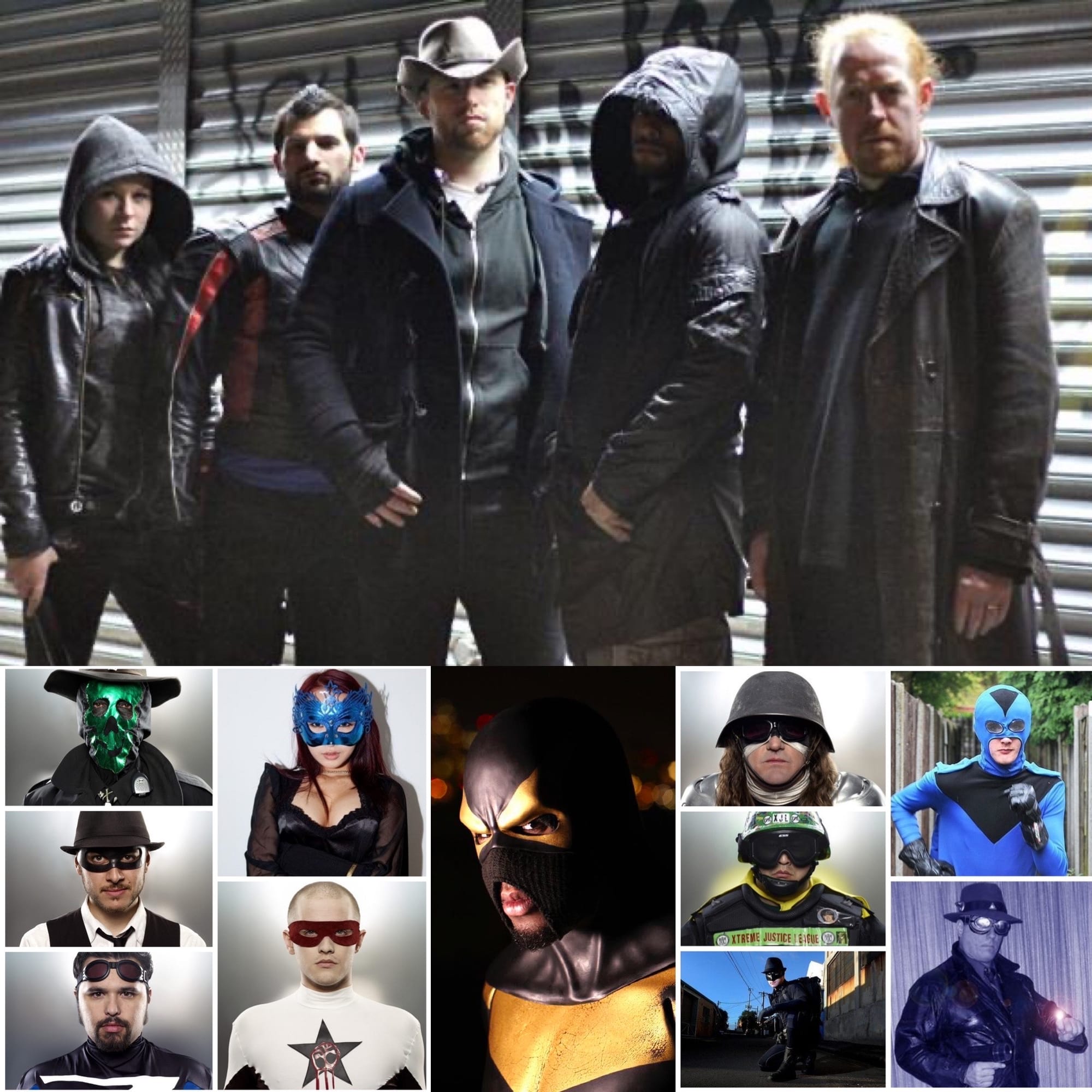
And why not? After all, they've had a subscription to Ninja magazine for years. They have an ill-fitting trench coat. They have some old Hockey Pads. They have that Katana from the Flea Market, some ninja stars too. They’ve seen the movies and the TV shows. They’ve read the comics. They’re ready, man, if crime showed it’s hideous visage–threatening some beautiful and submissive young woman, a sexy lady who would be awed by their unbridled masculinity and also so sexually grateful that they’d be so ready to be their girlfriend–then they too could become powerful, then they too could unleash violence on the jerks who "deserve" it. They too could become Batman... if they had to.
This all makes this version of the character, the grim and gritty and “realistic” Batman, more than just boring, the baggage that it comes with makes it kinda creepy too.
So yeah… I wish they'd do something else with the characater.
It's past time. We need something new, something different. I figure, why not lean into the fun and adventure instead? Give me a Batman in the blue and gray suit. Give me a Batman riding dinosaurs. Give me Batman vs Predator. Give me a Batman who is clinging to a grapple line that is attached to Joker’s biplane, and the nose of that biplane is stylized to look like Joker’s face. Give me that. Give me Indiana Jones Batman or a James Bond Batman. Give me a Time Traveling Batman, or a Batman in Space, or a Post-Apocalyptic Batman. Give me a Game of Thrones Batman. Give me Batman versus Vampires. Anything.
Just give me something else.

But oh man, do the nerds fight this whole idea. A lot of these toxic fans are little people, y’see. They're small. Sometimes this means physically small, sure, Little Man Syndrome, but whether or not it’s physically true, it’s always true about who they are inside. Inside, they’re small scared little guys whose greatest fear is to be laughed at, so they see the very idea of "fun" Batman as a personal insult, equating "fun" with silly and jokey, and being silly and jokey will get you laughed at, and oh my god, do they fucking hate that, which is why they’re only willing to accept a “serious” Batman, their own self worth depends on it.
BTW, the Venn Diagram for this particular crowd, and for the crowd that is the reason why calling Trump and Vance “weird” works so well at getting under the collective skins of both the candidates and their voting base, is basically a full circle.
But the thing is... fun doesn’t have to be silly or jokey. I mean, it can be, but it doesn’t have to be. It can even still be bad ass too, even when it’s silly…
Elmer Fudd vs Batman, anyone?
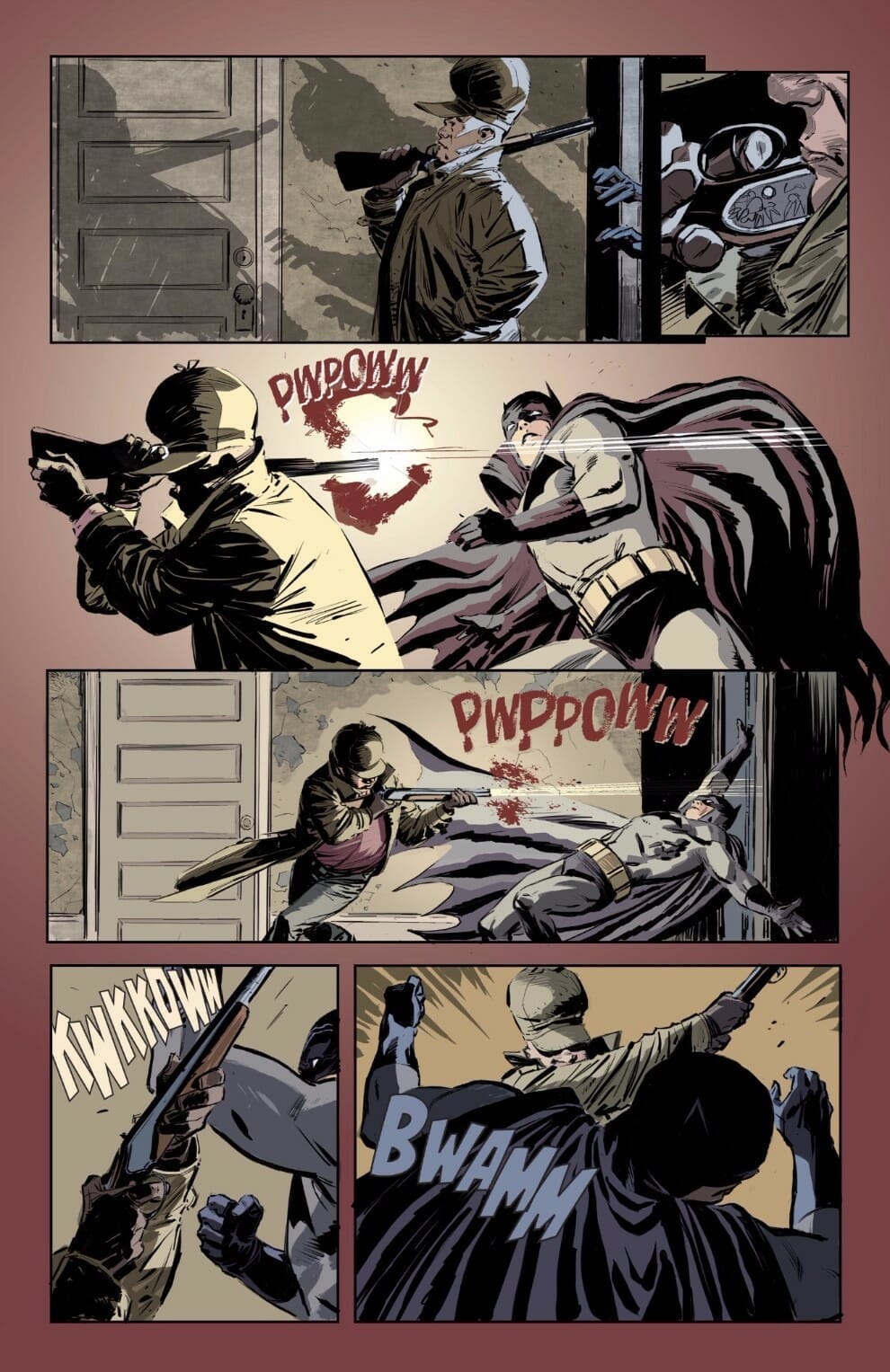
So yeah... this is me taking the very long way around to explain why I wasn’t impressed with this film upon my first watch. But in the time since, and as I said, with the Penguin show about to start, I’ve wondered occasionally if perhaps my general distaste for its very typical and boring and worn-out stylistic and narrative choices meant that maybe I didn’t give it a completely fair shake?
So with that in mind, I decided to sit down for a rewatch.
Batman
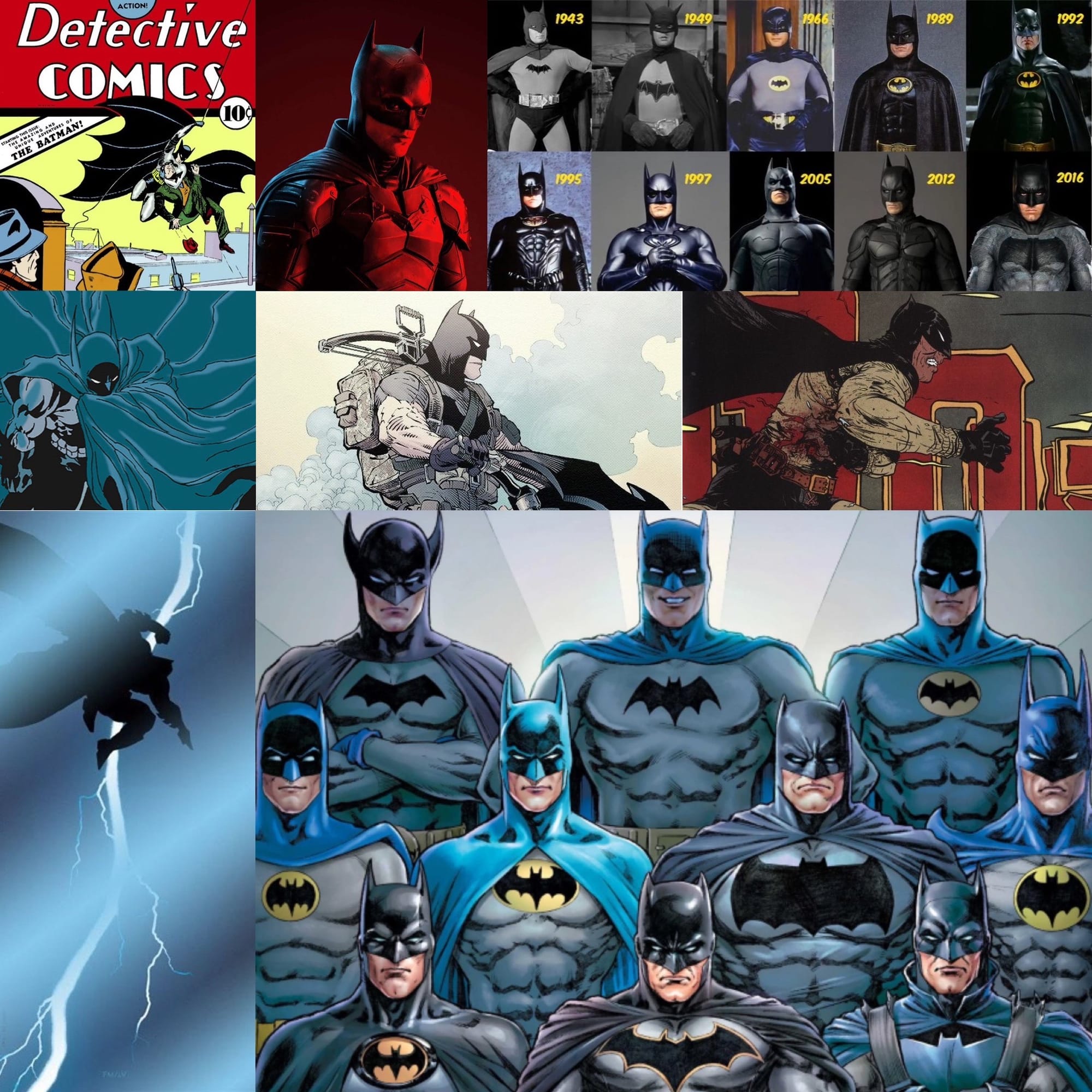
Drawing a lot of inspiration from such pulp fiction characters as Zorro and the Shadow, as well as literary characters like Sherlock Holmes, Batman was created by the artist Bob Kane and writer Bill Finger, debuting on March 30th, 1939, in Detective Comics #27.
Kane spent most of his life claiming sole credit, but it’s obvious to anyone who wants to look that it was Finger who substantially developed the whole bat-concept out of what was an otherwise very generic superhero.
Bruce Wayne is an American playboy, philanthropist, and industrialist who resides, as his family long has, in Gotham City. Gotham is basically a stand-in for several big, densely-populated American cities like Chicago, Detroit, and New York City, especially if they had a big Roaring Twenties mobster history. It is usually depicted as being located in New Jersey, right across the water from Metropolis, a city that, depending on the era, is located either in Delaware or in New York State. Regardless of its location, Gotham City is always depicted as a sprawling and over-crowded nightmare version of New York City, a place of rusty iron infrastructure and shadowed alleys, studded with clumps of towering skyscrapers, which is why it’s located across the water from Metropolis, which is often depicted as a 1950s City of Tomorrow version of New York City, because the pair are now meant to represent the two sides of the same coin that is the American City, and that dichotomy is reflected in their chief protectors.
Bruce Wayne’s origin story is so well-known at this point that it often seems like a waste of time now when a story recounts it. In a nutshell, Bruce swore vengeance against criminals after witnessing the murder of his parents, Thomas and Martha, as a child. He then spent his life training himself physically and intellectually, and after a bat flies through his study window, decides to craft a bat-inspired persona, reasoning that criminals are "a superstitious cowardly lot" and that the fear he would inspire in these lawbreaking ne're-do-wells by confronting them while wearing some tights, knee-high boots, a big showy cape, and a pointy-eared hood would help him in his quest to stop crime.
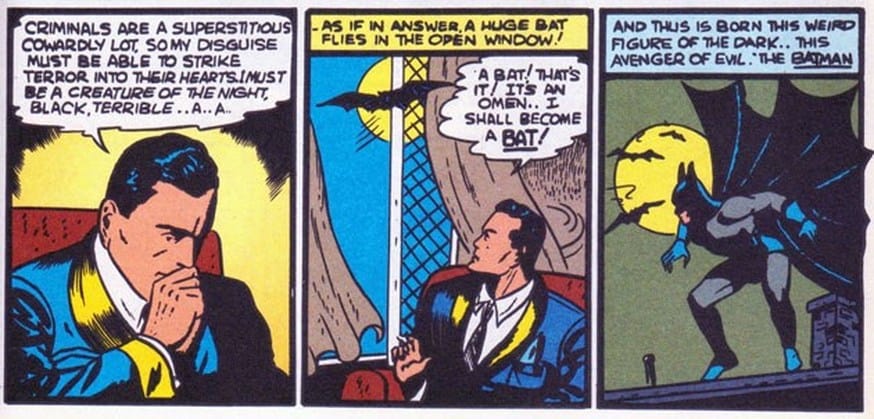
It’s been 85 years, and much like law enforcement in general, he has yet to successfully stop, catch, or deter the majority of crime.
At first, Batman was depicted as a ruthless vigilante who frequently killed or maimed the criminals he came across, but that didn’t last, and by 1940, he had evolved into a just and disciplined superhero who never kills, or carries a gun.
This remains the core of who Batman is.
Long considered DC's Comics flagship character, Batman does not possess any superpowers, and instead relies on his intellect, fighting skills, and wealth to fight evil, not just in Gotham City, but across the face of the planet, as well as all of Time and Space. At this point, the character has appeared in many different movies, TV shows, and comic books, including the mature Black Label imprint—the spiritual successor to DC’s famous Vertigo imprint—where they showed Batman's dick.
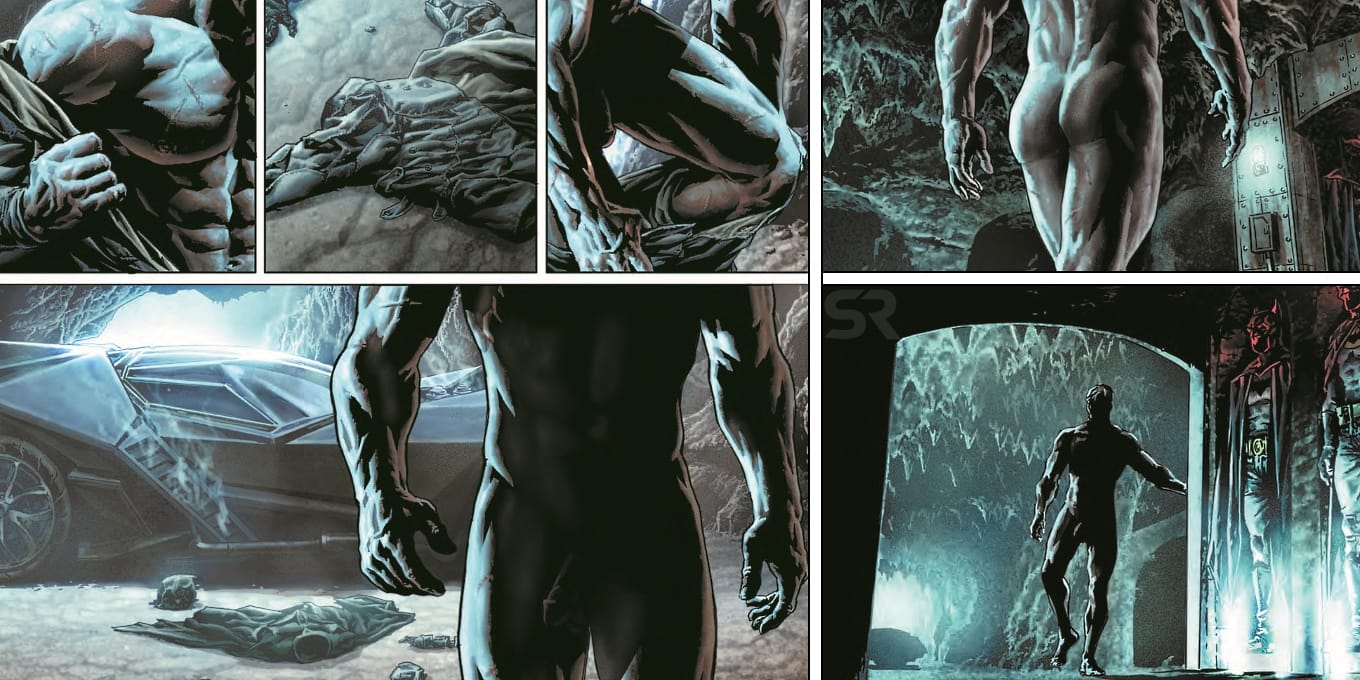
Catwoman

Also created by Bill Finger and Bob Kane, Catwoman first debuted as "the Cat" in 1940 in the first issue of Batman. The alter ego of Selina Kyle, she is a daring and alluring cat-burglar who works in Gotham City, usually while wearing a skintight bodysuit, wedgies be damned.
Catwoman is one of the most well-known and popular names in Batman’s very well-known rogues gallery. Pulling inspiration from multiple sources, including actresses like Jean Harlow and Hedy Lamarr (the mother of modern Wi-Fi), much like Wonder Woman, she has a not-so-subtle streak of BDSM running through her, and not only because she uses a bullwhip for a weapon. Kane and Finger’s intent was to give the comic sex appeal, as well as a character who could appeal to female readers, while also reasoning that cats were "kind of the antithesis of bats" which really sounds like the result of two old dudes brainstorming. Anyway, they landed on the idea that she would be a somewhat friendly foe, who still committed crimes but also brought a bit of swashbuckling “cat and mouse” rooftop romance into Batman's otherwise straight-arrow crime-fighter world.
While the character initially thrived, she was shelved from 1954 to 1966, because she violated the Comics Code Authority, which prohibited the depiction of "sexual perversion" and "criminal activities,” and it was deemed that Catwoman basically embodied both of those things with her morally ambiguous character and the fact that she was cat burglar.
The Comics Code Authority was established in 1954. A repressive set of “moral” restrictions, it was self-imposed by the superhero comic industry in a preemptive attempt to be an alternative to being crushed in the same way the Horror and True Crime comics industry was crushed by the same kind of rabid and hysterical fascist White Christian reactionary prudishness that later inflicted the Satanic Panic on us all. It was the end result of the bullshit-based Seduction of the Innocent book by the debunked liar and all-around fraud Fredric Wertham, that was then pushed by well-known White Supremacist and Eugenicist, Charles F. Murray. It was basically the de facto censor of the entire U.S. comic book industry, and its seal of approval was required in order for a comic to be published all the way up to the early 2000s, when it was finally abandoned.
But in the time since, Catwoman has found her niche as a bit of an anti-hero and a Robin Hood-esque opportunist, decidedly different from Batman’s other villains in that she is neither a killer, nor is she evil.
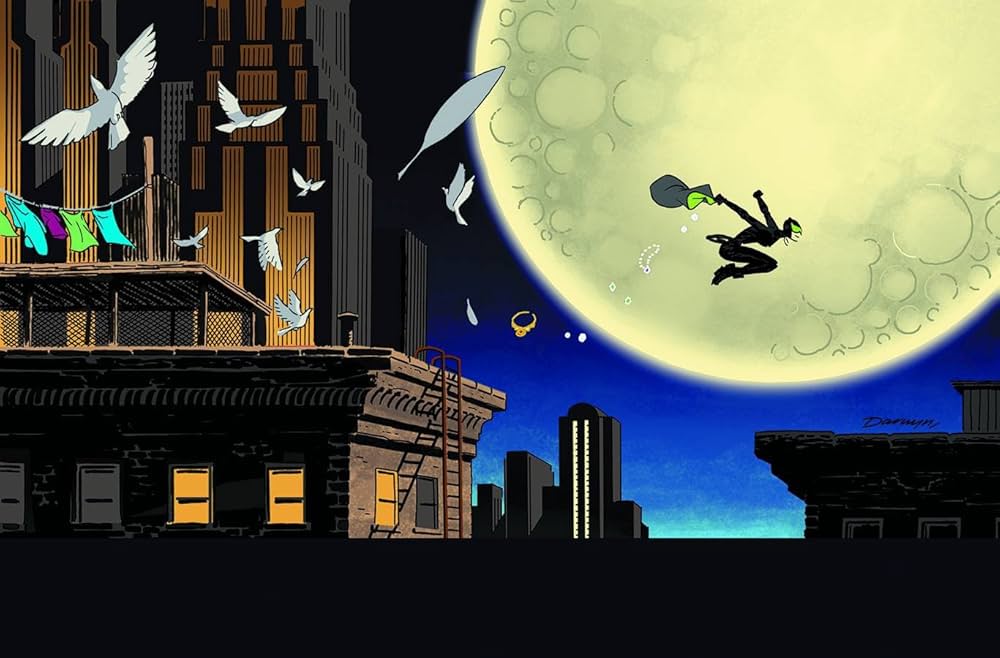
The Riddler
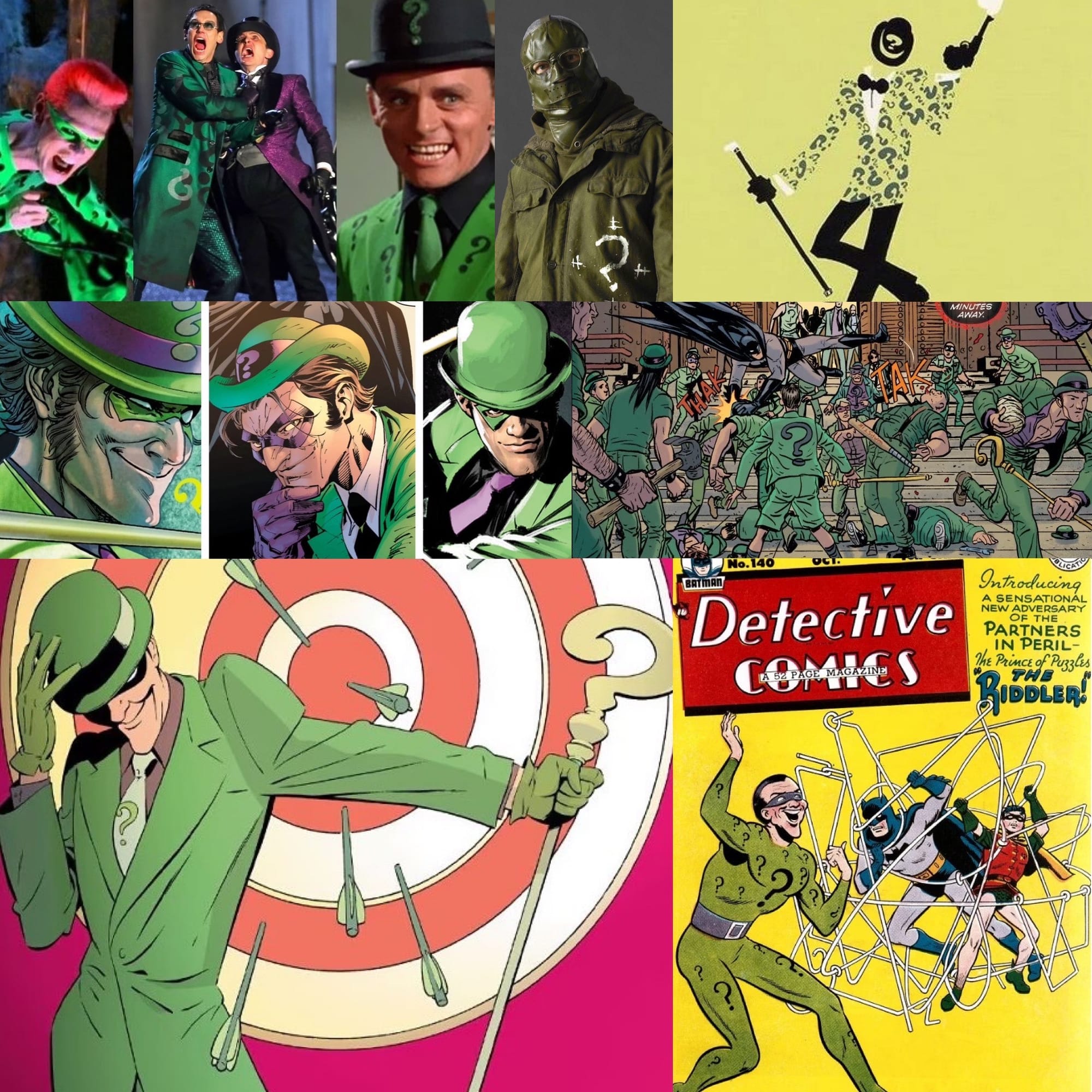
Created by Bill Finger and Dick Sprang, The Riddle debuted in issue #140 of Detective Comics in October 1948. Commonly depicted in a domino mask and either a green unitard covered in question marks, or a green suit and bowler hat, the question mark is his sigil. He’s well-known for opening his gambits against Batman with the saying "Riddle me this..." before stating one of his iconic riddles. He is one of the most enduring enemies of Batman’s rogues gallery.
A criminal mastermind in Gotham City with an obsessive compulsion to incorporate theatrical or gimmicky riddles and puzzles into complex death traps, which usually involve robbing a bank, all while proving his intellectual superiority over Batman, the Riddler can be dangerous, but he's more often portrayed as a bit of a goofball, and a robber, not a killer. His real name is Edward Nigma, a play on words, as E. Nigma is obviously a reference to "enigma," which means a person or thing that is mysterious, puzzling, and/or difficult to understand. Basically… a riddle. This is the kind of thing that comic book creative teams used to do all the time. If a character's name wasn’t an alliteration, it was probably a pun.
Much like how Lex Luthor’s hatred of Superman can be traced to the moment when Superboy used too much super-breath to put out a lab fire and blew off all of Luthor’s hair, the Riddler has a great origin too. When he was a child, a teacher announced a puzzle contest, with the prize of a book of riddles going to the person who solves it the fastest. The young child Riddler, set aflame with his desire to win, breaks into his elementary school late that night so he could familiarize himself with the puzzle overnight, and be able to solve it the fastest. The next day he won the contest easily, and thus… his life of crime began.
He’s plagued Batman ever since.

And with that, my grievances having been aired, and our main players having been introduced, on to the movie itself...
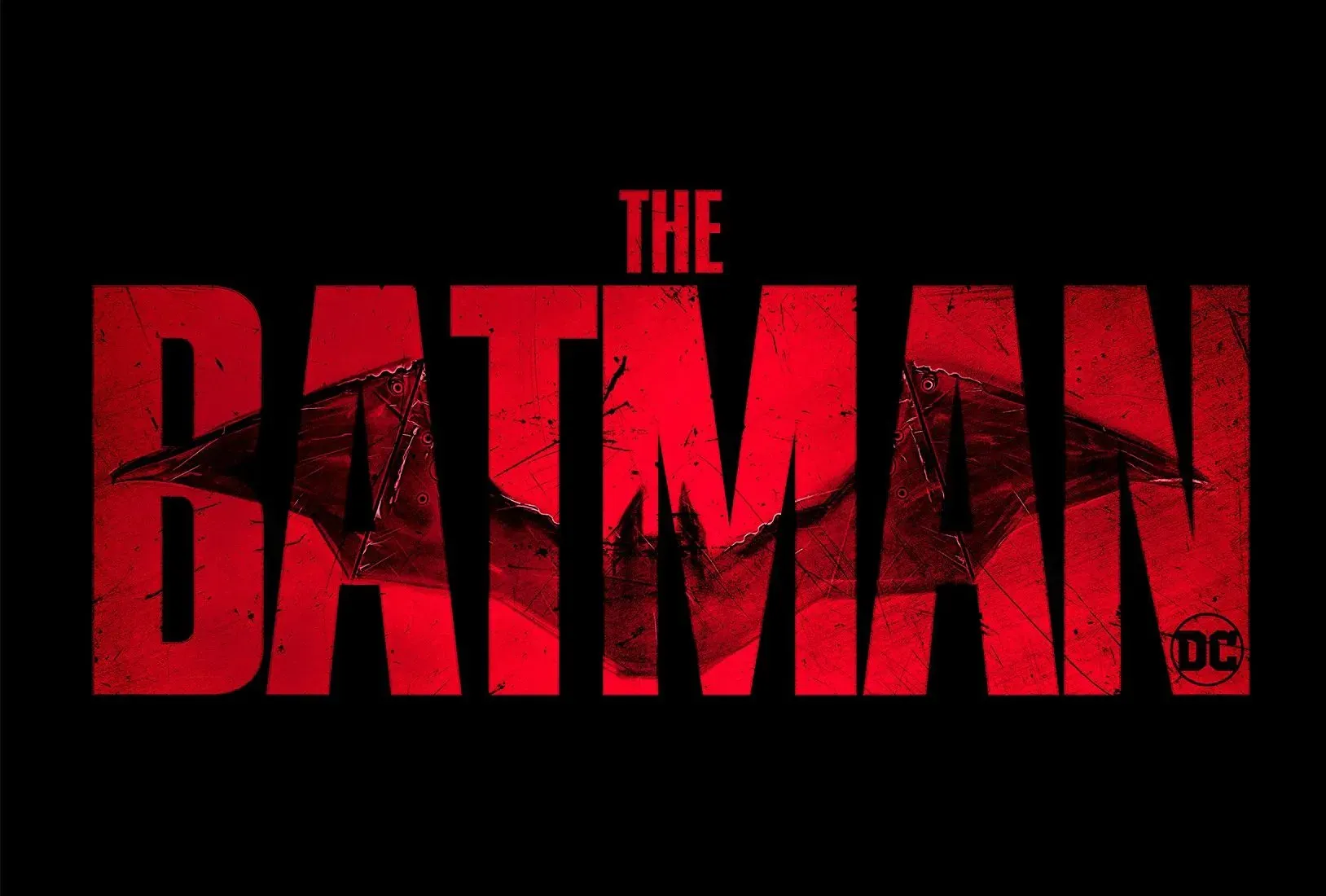
It’s Halloween in Gotham City, so that means that it’s raining, and Ava Marie seems to be playing everywhere. The film opens on a crime. The mayor has been murdered, and despite the animosity of the Gotham PD, the Batman, now two years into his crusade to rid Gotham of crime, and doing his best Travis Bickle-esque voice-over narration, shows up to investigate…
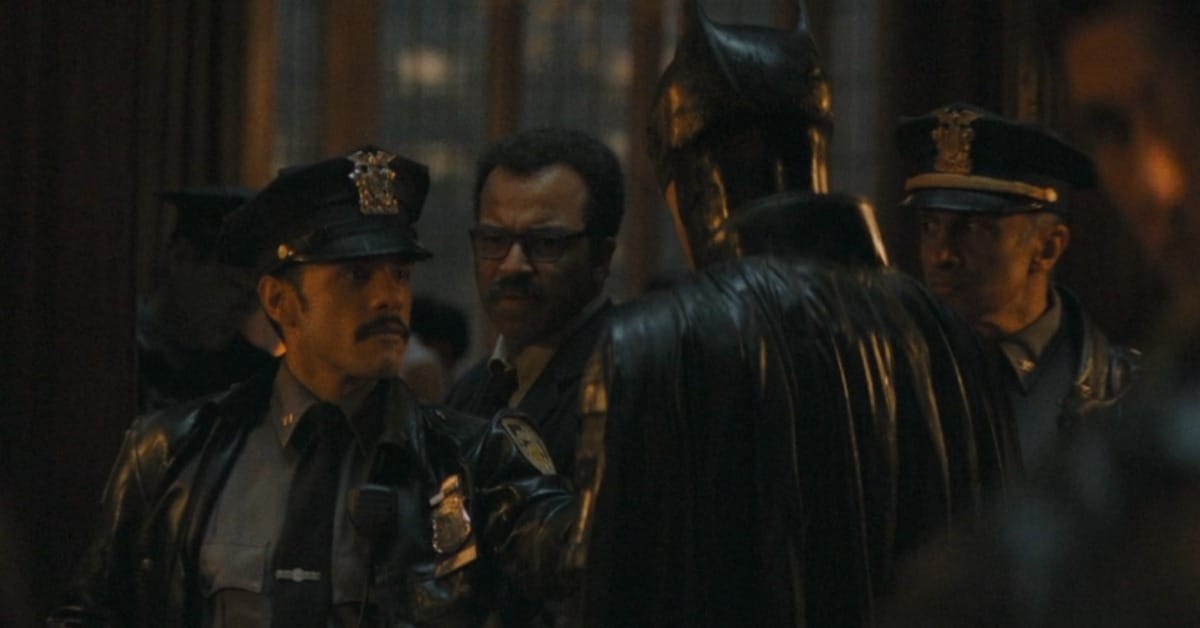
Someone is killing off the political leaders in Gotham City, including the mayor, the chief of police, the district attorney, and even a fearsome mob boss, and they are all accusing each other of corruption. This killer, known as the Riddler, leaves taunting notes and coded riddles behind, each one addressed to The Batman, each one another piece in a trail of clues that dare the Dark Knight to follow.
Teaming up with Police Detective Jim Gordon, as well as Selina Kyle, otherwise known as the elusive burglar Catwoman, The Batman’s investigation lead him deep into a decades-old conspiracy, one that stretches all the way back to his own father, Thomas Wayne, to the time when he was running for mayor of Gotham City, just before he and his wife, Bruce’s mother, Martha, was murdered.
Solving this crime, and stopping the Riddler, will not only mean exposing a web of corruption reaching to the highest levels of Gotham City, it will also mostly avert what could have been a historic tragedy for the city. Most importantly, as the new day dawns, this adventure will also provide the impetus for The Batman to re-examine his war on crime and his own role in Gotham City.
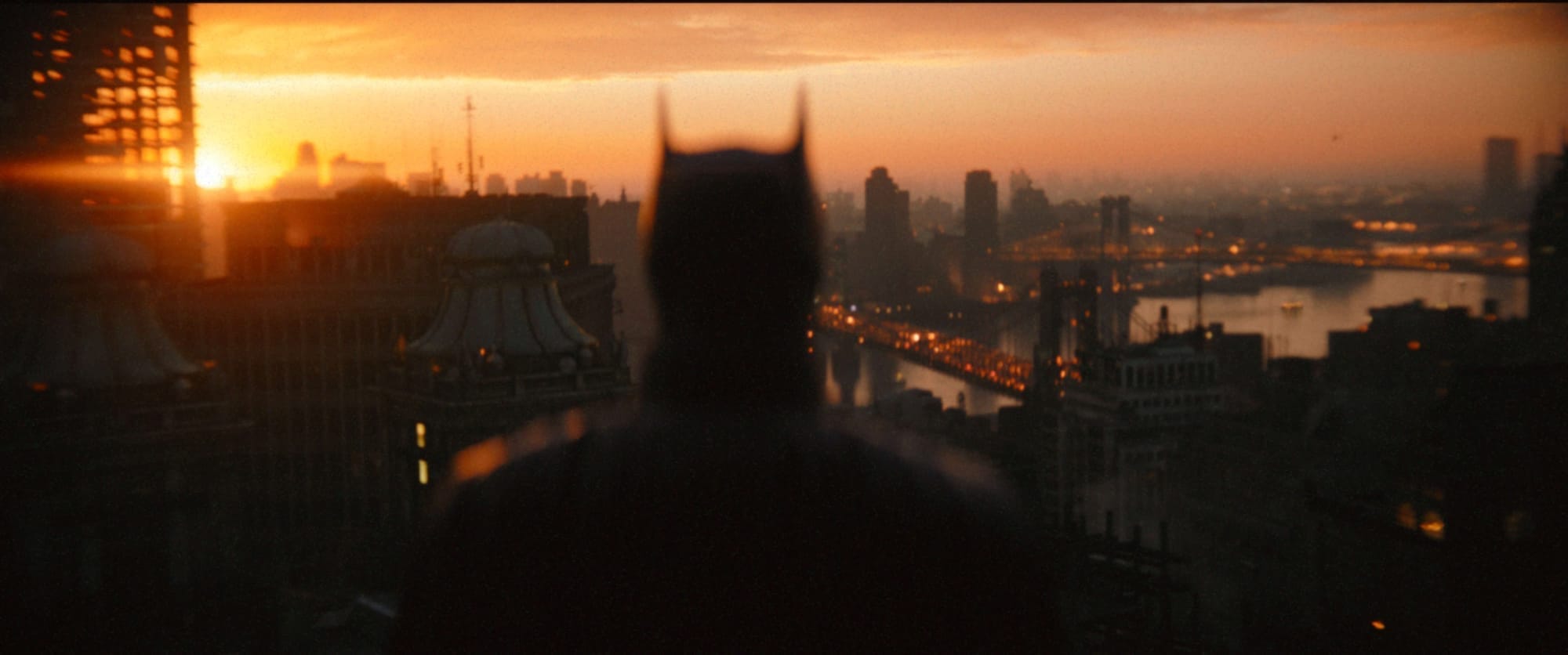
One of the ugly roots of The Batman as a character is White America’s hysterical fear of urban crime, and this film is especially bad for it.
This can not only be seen throughout the film, sprinkled as it is with bits of Fox News-repeated nonsense like The Knockout Game, but also in its entire aesthetic. The film positively revels in its portrayal of Gotham City as the most outrageously hyperbolic depiction possible of the American Urban Nightmare, playing directly into a ridiculous and baseless fear that many White Americans who do not live in a major city truly believe to be an accurate reflection of reality.
Now, I’m always loathe to get into impeaching the motivations and activities of a comic book superhero world. Like how, for instance, Reed Richards–Mr. Fantastic of the Fantastic Four–spends all his time making outfits out of unstable molecules and building flying bathtubs to tool around NYC in, instead of like, curing cancer. I don’t usually bother pointing this kind of shit out for two reasons.
One, as far as us comic fans are concerned, it’s old hat. We‘ve heard all of those jokes. All of them. If you aren’t a comic nerd, and you’ve just seen some superhero movie, and you think you have some hilarious insight into the characters that will expose how silly their world truly is, well, I’ve got news for you… you don’t. You’re about 30 years too late, dipshit. We’ve heard it already. Shut up.
Two, it’s mostly because it’s a silly waste of time. There are real problems in this world, and no one cares about the fact that these characters aren’t truly helping the world in the best way that they conceivably could. It’s escapism. It’s not real.
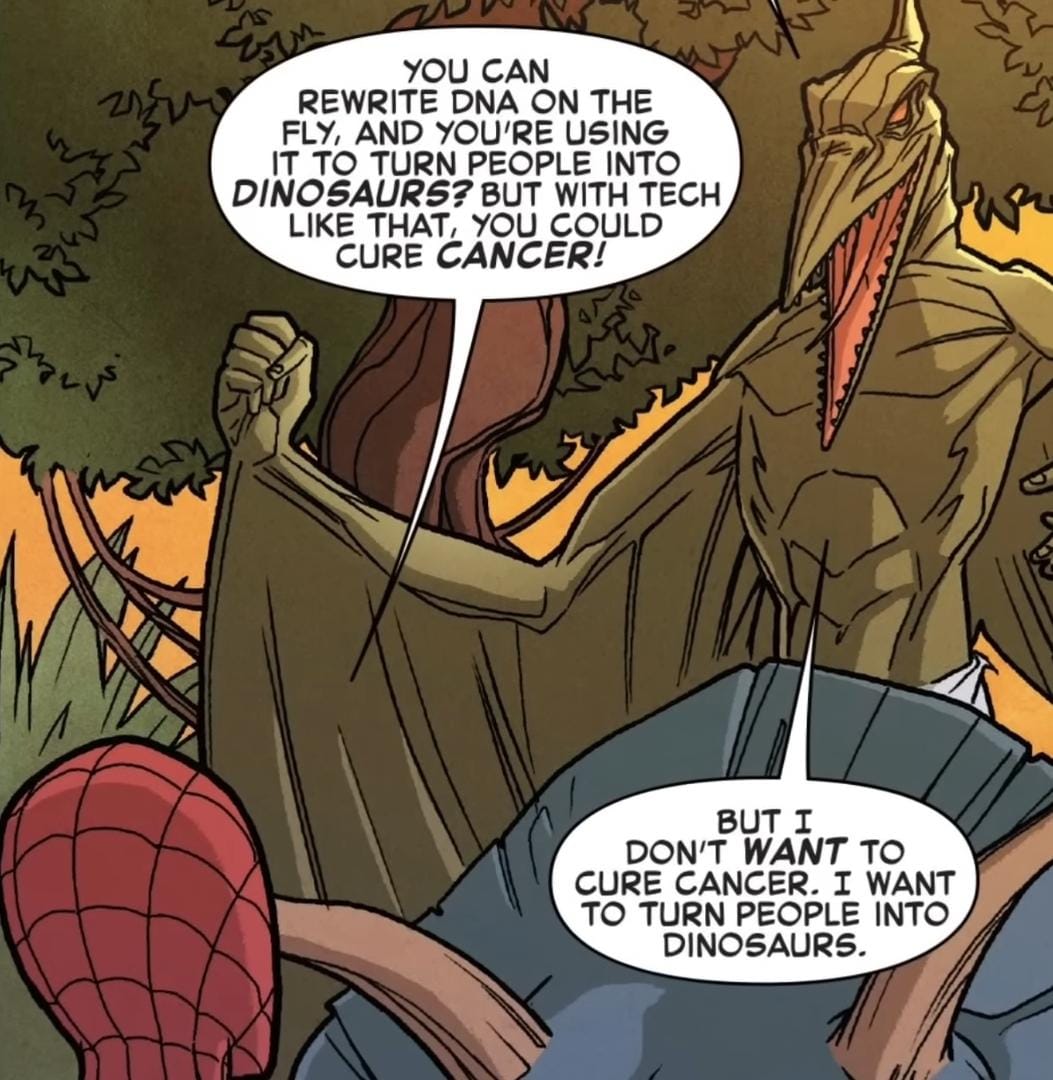
But…
This root reason of White Fear is why Batman has never been about billionaire Bruce Wayne using his seemingly unlimited wealth to help provide opportunities to all the under-resourced communities of Gotham City, and never will be.
Yes, Wayne Enterprises has the Wayne Foundation. I know this. I know the Foundation addresses a lot of social issues. It funds free health clinics and drug rehab clinics. It supports the arts and education. It builds hospitals, orphanages, libraries, and a whole bunch of city infrastructure, and then it rebuilds it all when the city is destroyed every couple of years by one monstrous world-destroying threat or another. They even send money to overseas refugee camps. And as I already said, I understand that this is not the point of the character or the comic, or that any of it makes any real world difference either way. You’re right, whether Bruce Wayne spends his money altruistically or not doesn’t really matter, because it’s all fiction.
That’s true.
But it’s also true that this version of the character, the "grim and gritty" Batman, has always been firmly rooted in vicariously unleashing the rage of those who feel like their entitlement isn’t being properly served. That’s why the "realistic" and "grim and gritty" version of Batman more often fights ”muggers” and ”urban gang members," instead of some wild costumed miscreant cackling atop a blimp on their way to turn the Gotham Debutant Ball into a bunch of giraffes or something.
These stories are always, undeniably, at least somewhat rooted in that White American fear of “urban” crime. Through Batman, the audience is able to enjoy the cruel brutalization of people stuck living below the poverty line, or experiencing homelessness, or worst of all, are unfortunate enough to have to suffer from a mental health issue in a city where their only option for treatment is a draconian institution that is only ever interested in brutalizing them more. In a nutshell, in these “realistic” versions, most of the people that Batman fights are the kind of people who ruin the “nice” families’ brunch whenever they’re on an outing into the city, right? That’s the whole point, to be the powerful one, and to wield that power whenever inconvenienced, whenever you feel it's warranted.
It’s an old joke that Bruce Wayne could just pay for Gotham City to be a better place, but he doesn’t because he really just wants to dress up in a gimp costume and beat the ever-loving shit out of Murder Clowns. It’s a joke, but it’s also true, and nothing highlights that more than the very setting of these grim and gritty “realistic” Batman stories.
In today’s world, it’s kind of hard to watch these “realistic” versions of Batman, and not think of how incredibly selfish Bruce is, crying about his dead parents in a moldy cave beneath his multinational corporation’s tower, watching TV on his own personal satellite, after spending his twenties backpacking around the world. It’s hard not to think of the housing Bruce Wayne could build if he sold his Batplanes and his Batcopters, or his Batboats, or his Bat-submarine.
This is why “adventure” Batman is better than “grim and gritty” Batman.
Adventure Batman appears in exciting tales of swashbuckling derring-do. It’s a fun time. It’s also obviously fake, and that‘s what makes it escapism. “Grim and gritty” Batman, on the other hand, the “realistic” Batman, is the angry child of the white rage and racist fear that gave birth to White Flight, to Redlining, and to the pattern of destroying entire neighborhoods, but only certain ones, in order to facilitate the ease of travel of the very demographic that abandoned the city for the unofficially segregated suburbs and not-officially designated sundown small towns, siphoning away money and oppotunity when they did, all creating an attitude of entitlement and fear which ultimately led to things like this... the story of a wealthy white man who has decided that he alone can stop the scourge of “urban” crime, but only through lawless violence (but it's okay when he does it... wink)
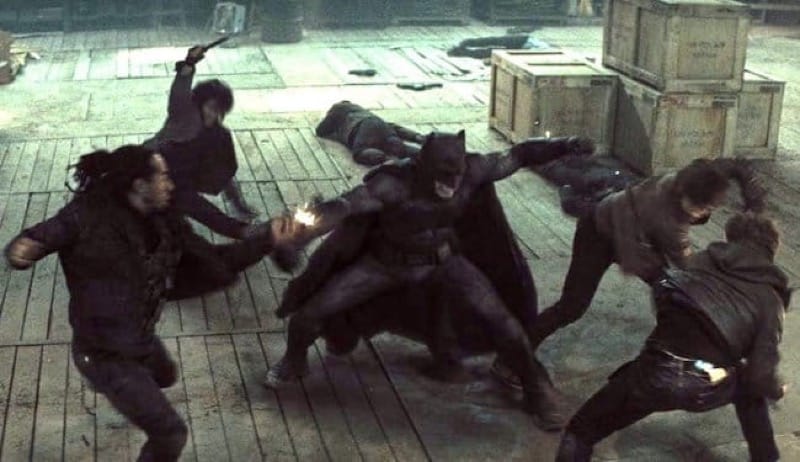
The fact that some of the fuckers The Batman fights might actually deserve an asskicking does not make up for the fact that Batman’s fists are nothing but snoopy band-aids, while Bruce Wayne’s money is the real cure. Because it’s never crime in the small towns or suburbs, and rarely the crime in the glass and steel towers or the corporate boardrooms, that the “realistic” Batman fights, right? It’s always “urban” areas.
That’s the specter of White Privilege.
These kind of “realistic” Batman stories are about hoarding wealth, and then using that wealth to stand above people, figuratively and literally, people who, as a result of your hoarding, don’t have the same options as you. Because of that, they’re often forced into hard decisions, and because of that, the hero gets to judge them guilty, and punish them. And to be fair, this film does go to some lengths to acknowledge this reality, but in the end, that corruption scandal story line involving the wealthy and powerful of Gotham mostly just feels like it was done in order to have their copaganda cake and eat it too.
It especially feels this way when it portrays the Riddler’s angry white incel rage as being a champion of the legitimate grievances of actual marginalized communities, all while set in an exaggerated ideal of what many small town and suburban white people in America truly believe to be the crime-ridden reality of life in America’s Big Cities, and that is some boldly entitled shit. Even worse, it especially feels this way as both the Batman and the Riddler are portrayed here as vigilantes, not hero and villain, but as shades of gray, both of them at least somewhat righteous in their crusades, and that is yet another exhausting example of White Centrist “both side-ism” that does nothing but enable the most entitled and the most cruel. Portraying the hero as the police’s special little friend, one who doesn’t need to adhere to the law, because he is obvious right, is White Privilege in a nutshell. And the villain, meanwhile, is taking out the true rot at the center of society, the corrupt elites, and even though he went about it in the wrong way somewhat, and yes, killed a few people, he wasn’t totally in the wrong either.
So, who’s to say who’s right and who’s wrong, right?
Maybe, the film posits, they’re both a little bit from column A and a little bit from Column B, right? Maybe, we should all just meet in the middle, shake hands, and admit that it’s okay to have “differences of opinions,” right? Even if that difference in opinion is about who gets the right to exist and who doesn’t, right? Maybe, we should all just admit that bipartisanship is the way, right?
Whatta ya say?
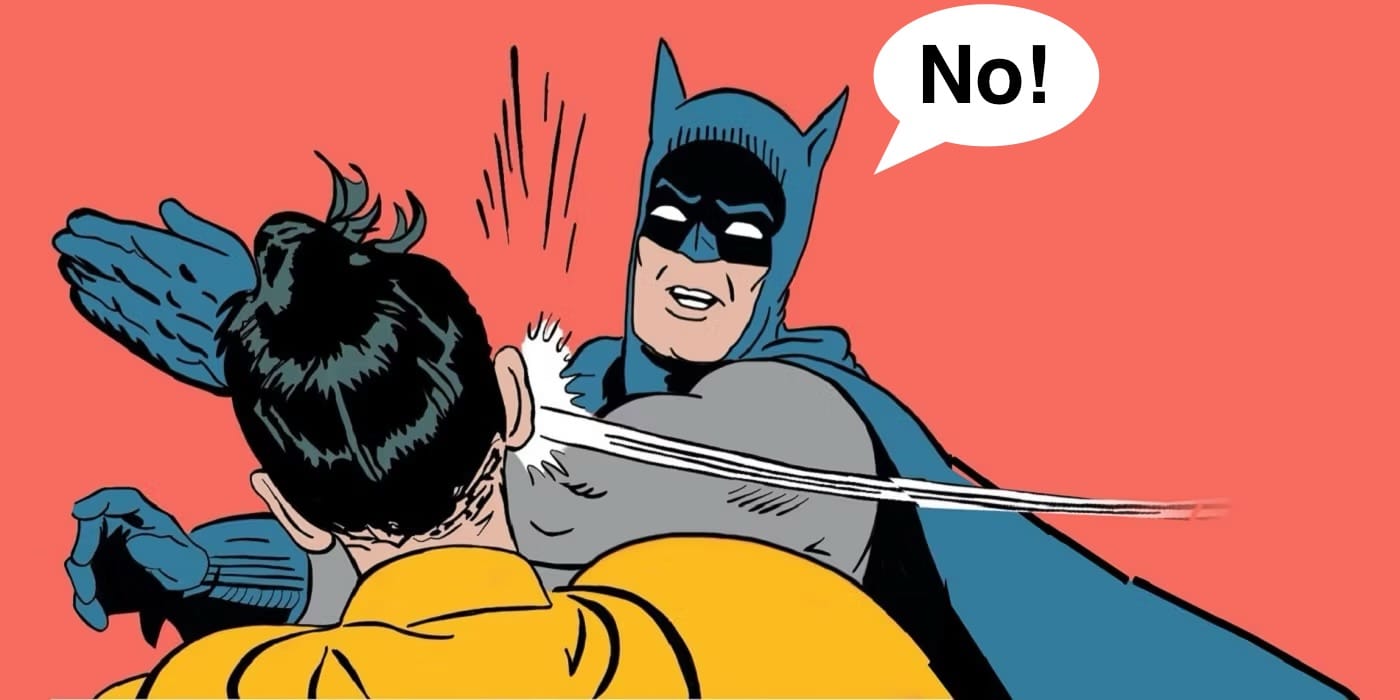
So, while it’s obvious in this film that the Riddler and his army of internet incel minions are all meant to be a twisted mirror to Batman’s entitled crusade of white privilege, it feels like a half effort.
Because, at the same time, at the end of the film, we have the new black female mayor of Gotham City–who had just survived an assassination attempt by an incel army, and who had run her entire campaign on a platform of cleaning up the city, starting with the fact a masked vigilante was dispensing a brutal nighttime justice in Gotham, all with the tacit approval of Gotham PD–suddenly finds herself being saved by him, literally having to take his hand and be lifted up to safety or die. So there’s that particularly problematic optic too, a nice little cherry atop the whole kinda crappy sundae, a moment to basically remind everyone that a white guy is taking care of this shit, and it’s better if you just stay out of his way and let him deal with stuff the way he deems best, because he’s right.
This is the problem with “realistic” superheroes. It’s an unavoidable thing that the very concept of superheroes is at least somewhat authoritarian and fascist, but the "realistic" version, especially when it's Batman, is like the Palmolive Dishwashing Liquid version… It’s soaking in it, Madge.
Of course, all this having been said, what can you really do about it? Batman is a character born of, and rooted in, white privilege and copaganda, the metaphorical Good Guy with a Gun, you either have to accept that going in, or maybe just skip the inevitable next film.
It is what it is, right?
So, yeah, this is a good looking film. It’s got some cool moments. The car chase. The kite suit escape. It’s got some fun. And I did enjoy Batman beating up a bunch of bigot misogynistic incel scumbags. Also, I want to give points to this version for not setting it in the traditional Year One setting, for not focusing on the creation of Batman, and instead setting it in Year Two, telling a story about the evolution of the Batman, with Bruce not only accepting his responsibilities as the Batman, but as a Wayne to Gotham City, and I liked how it illustrated this by starting him out in a sub-basement of Wayne Tower, instead of in the Batcave, showing how stately Wayne Manor is still a rundown ruin waiting for him to return to his true place. Also, besides avoiding a needless rehashing of the most well-known origin story of all time, we also didn’t need yet another story of Batman going through trial and error with his gear, so that was nice.
The cast is great too. Zoe Kravitz was a little weak, but I think that was mostly because all I can think about whenever I see her is how 24 year old Kravitz was so creepy around 14 year old Jaden Smith that Will Smith had to run her off, and she was so bitter about it, she got real vocal and salty on twitter, talking shit about Will Smith after the Oscar Slap. But other that, it’s hard to go wrong with people like Jeffrey Wright, John Turturro, Andy Serkis, Peter Sarsgaard, and even a little bit of Barry Keoghan. Paul Dano still has the most punchable face ever while still being a really great and charismatic actor, and this made him the perfect choice for the most shitty version of the Riddler ever conceived. Yes, I appreciated how this version was based on the real life incel problem currently threatening this country, but also… it wasn’t the Riddler, it was a knock-off Joker. Colin Farrell is great as the Penguin, doing a burlesqued Tony Soprano type as I already mentioned, so I’m looking forward to the Penguin tv show. And most importantly, Robert Pattinson was a good Batman. He looked good in the suit too, especially because he made it look very convincingly like, much like the song says… that Batman smells, and he probably smells a lot like a moldy old gym locker room.
I did think that Catwoman’s mask looked bad, and so did Bruce Wayne’s hair.
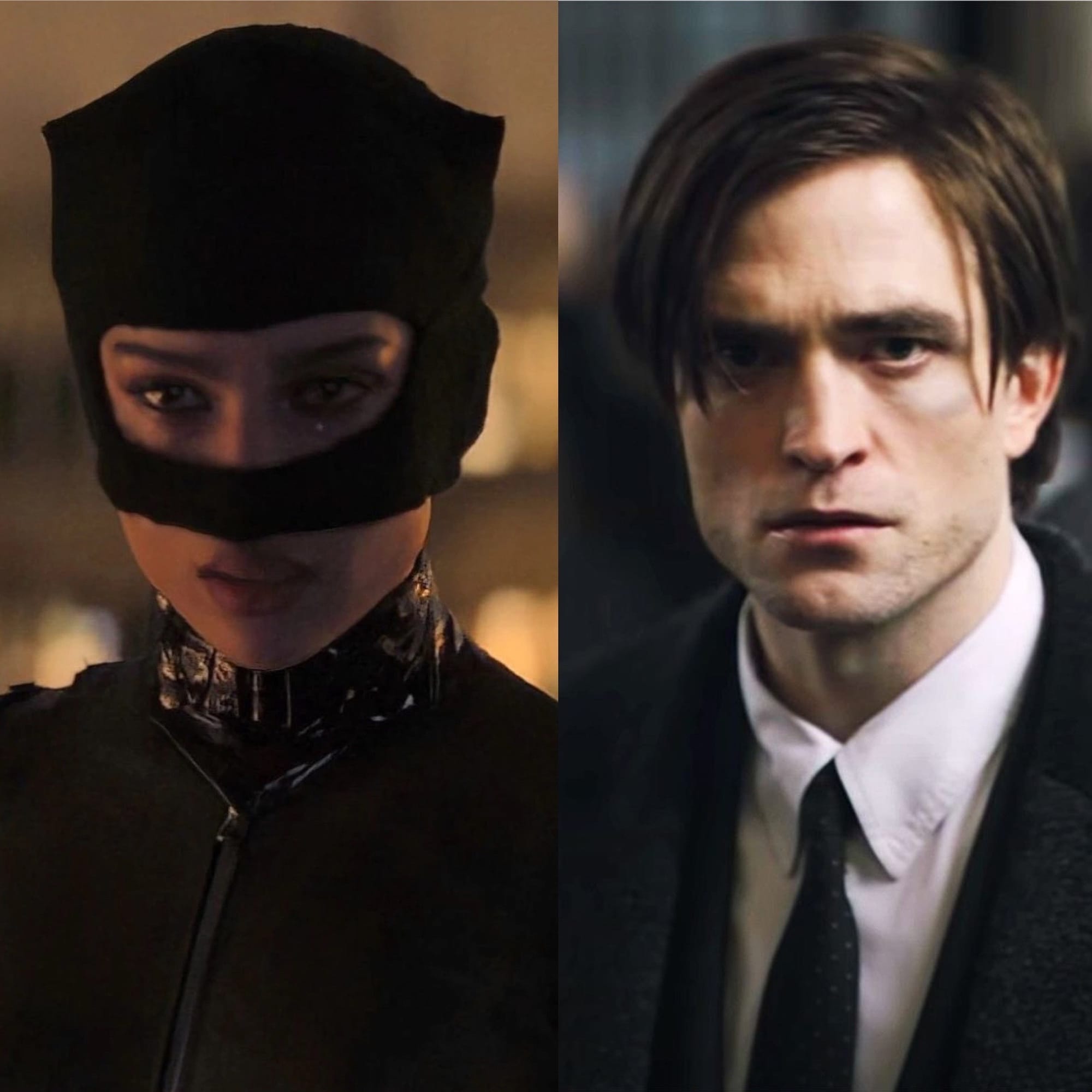
Just saying.
Also, the Gotham Sea Wall features heavily in the third act, and it just wasn’t mentioned loudly enough early on in this movie. It’s mentioned so little, in fact, that if you weren’t fully listening at the exact right moment, you would’ve missed it, which meant that when it gets mentioned again in the final act, it’s a little confusing as to what exactly they’re talking about.
Finally, the way the Riddler writes, his whole aesthetic really, is just too silly in its deliberateness.
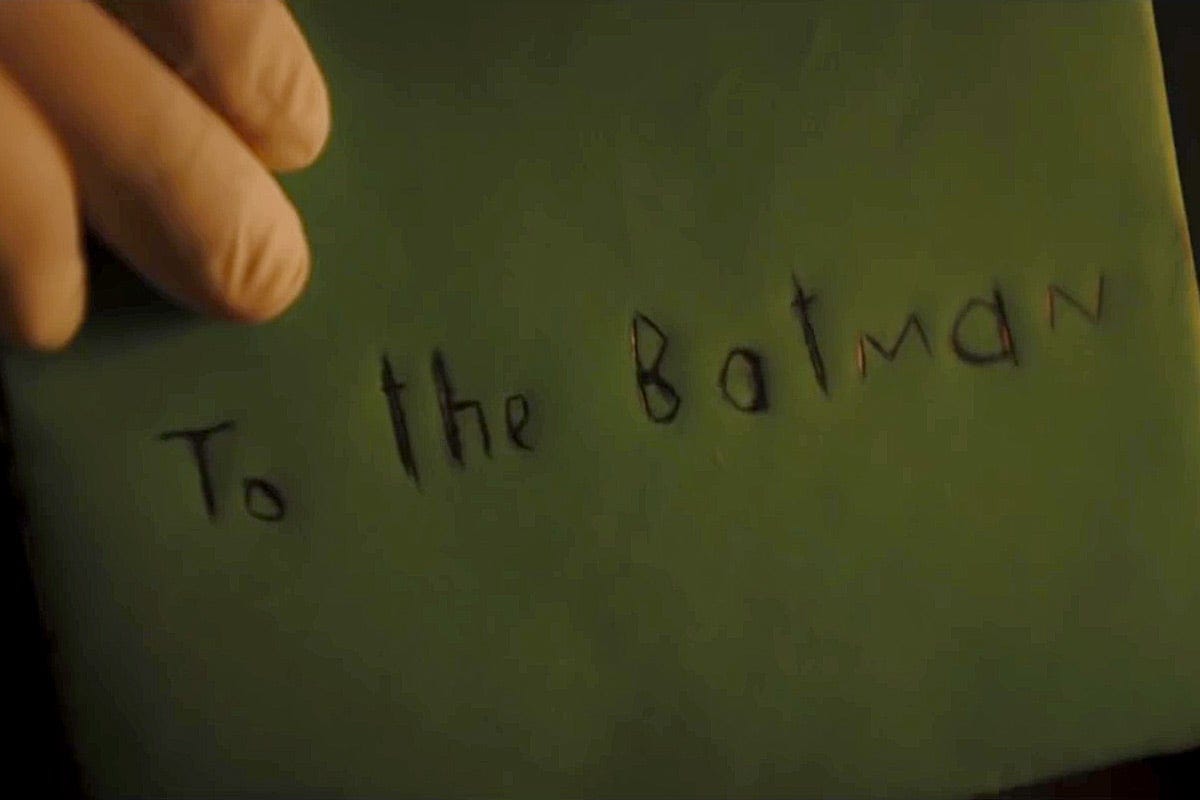
I’m sure nerds will be like “he’s disguising his handwriting,” but all I can imagine is him laboriously trying different styles, deciding how exactly to write this card in a way that will most clearly convey to the Batman that he is insane and scary. Plus, it just looks like how someone who has a seasonal job at Knott’s “Scary” Farms would write it when they're sending out their Halloween Party invites. Spoooooky!
I mean, I get it, half of being a costumed hero or villain is the branding, and also, he’s supposed to be a mediocre incel lacking in self-awareness, but still, all I can picture is how his garbage can is probably full of colored envelopes that he decided just weren’t CRAZY enough. Who do you think the Riddler listens to when he’s making one of these cards? Slipknot? Insane Clown Posse?
In the end, at just short of 3 hours, you very much feel every moment of this film, but at the same time, it doesn’t seem like any of the scenes were unnecessary. It’s just… a very, very long movie. And after seeing it a second time… yeah, it’s good, but it’s definitely not great, and also... yes, I am definitely tired of the grim and gritty version of Batman.
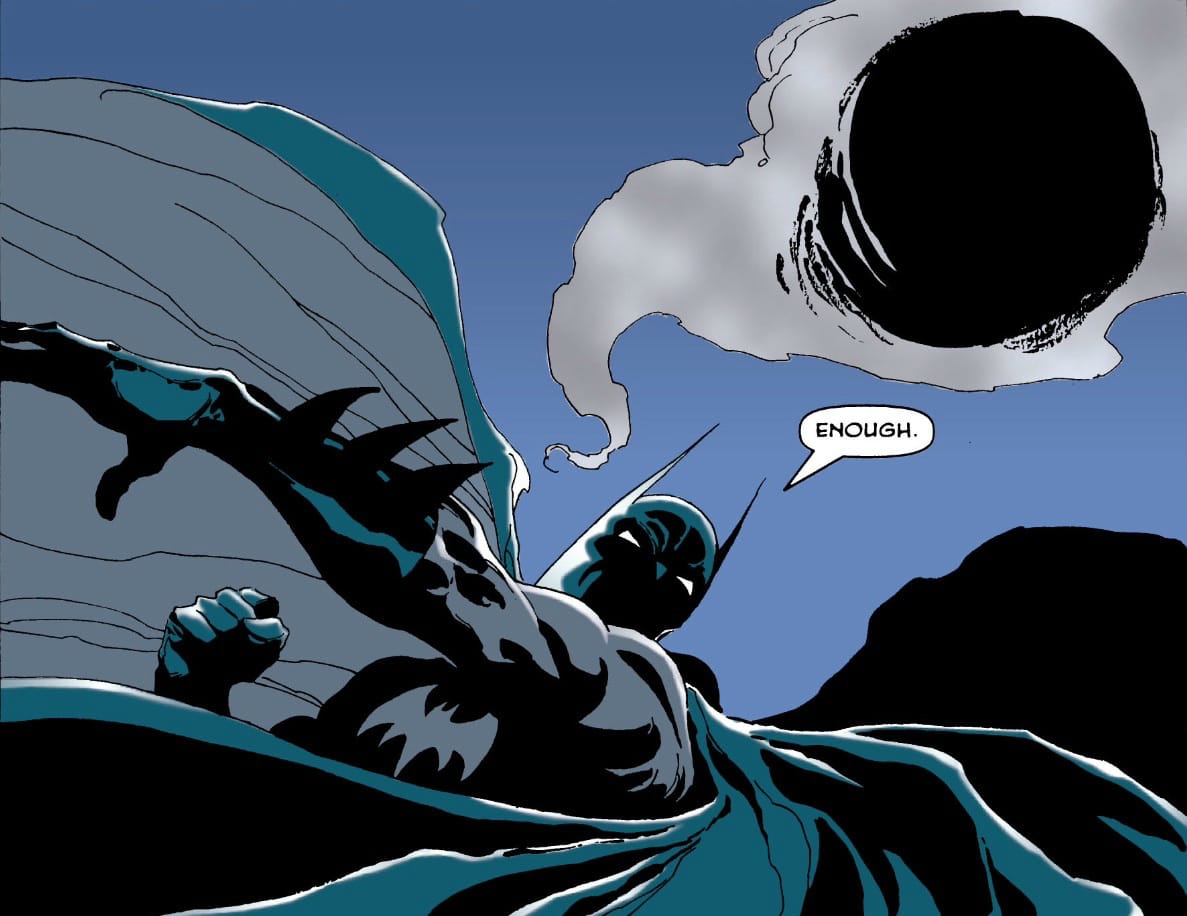
I know there’s going to be another one of these, and it will probably feature… (heavy resigned sigh)… the Joker. But interestingly, James Gunn is now in charge of the DC films at Warner Brothers, and his new slate starts with The Creature Commandos, Superman, and Peacemaker Season 2 next year, and he has made it clear that this version of Batman is not taking place in the same universe as the rest of the WB/DC films, so that leaves the question open of what style exactly will his version of Batman be? Judging by his general style, and his other films, dare I hope that Gunn's version of Batman will be… fun?
Fingers crossed.
